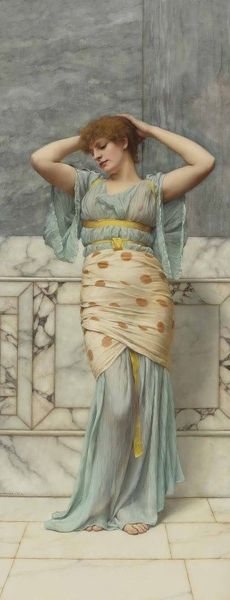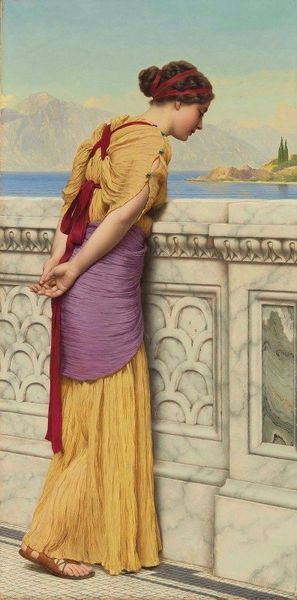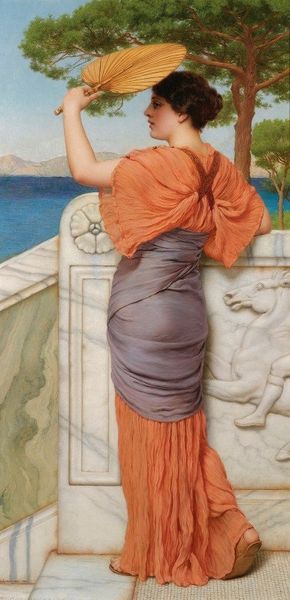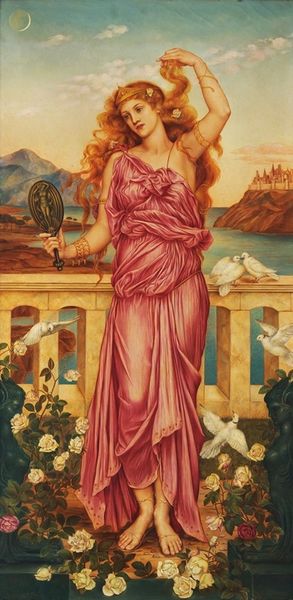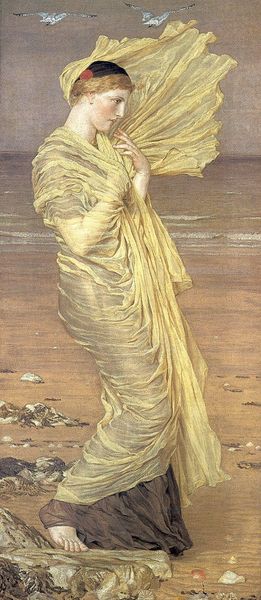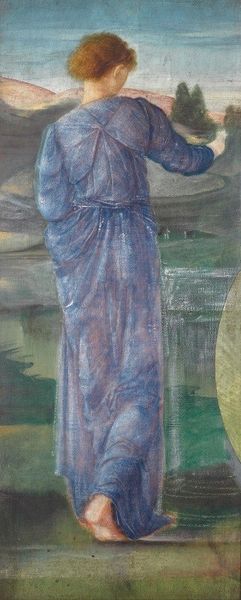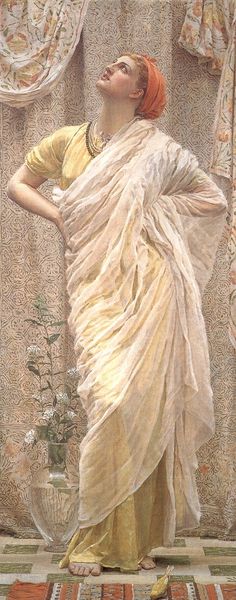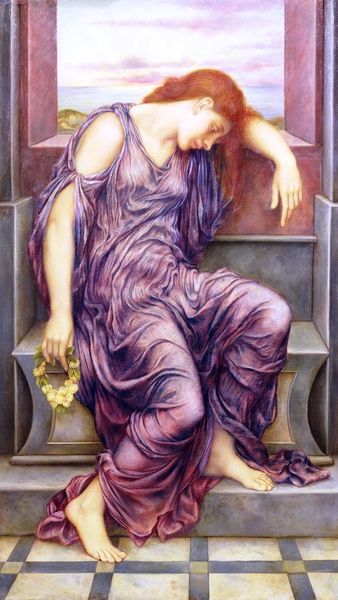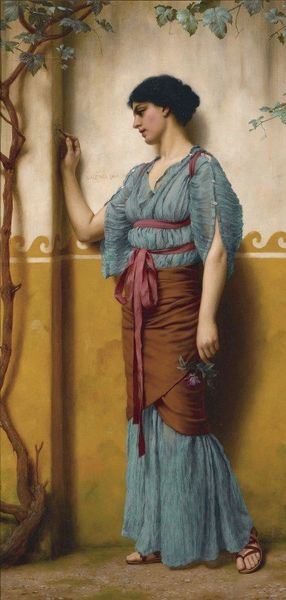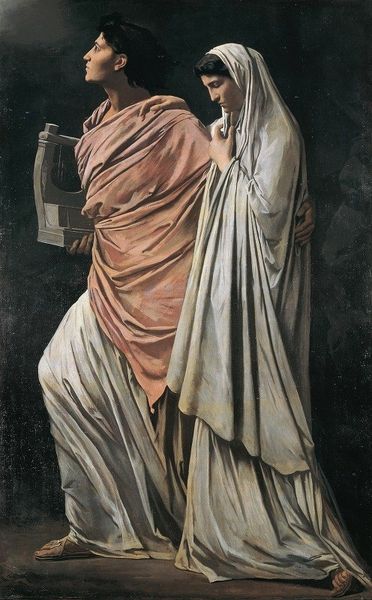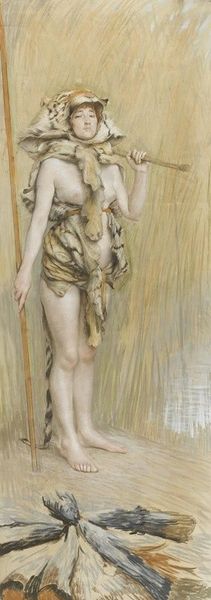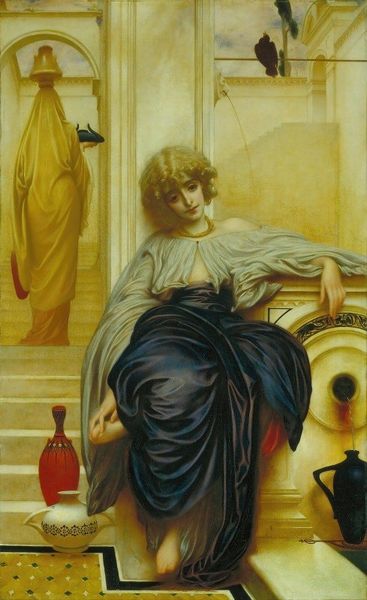
oil-paint
#
portrait
#
allegory
#
oil-paint
#
landscape
#
figuration
#
oil painting
#
romanticism
#
mythology
#
history-painting
#
pre-raphaelites
Copyright: Public Domain: Artvee
Edward Burne-Jones painted "Aurora," depicting the Roman goddess of dawn, without a known date. Burne-Jones was deeply entrenched in the Pre-Raphaelite movement, an artistic rebellion against the industrial revolution and academic art. Aurora, in her flowing orange gown, stands between the classical and the contemporary, her identity carefully constructed. She is a figure of ethereal beauty but also one that seems intensely human. She is caught between worlds. Her bare feet suggest a connection to nature, a rejection of the rigid constraints of Victorian society, while her dress evokes a romanticized classical past. Burne-Jones's Aurora offers a study of the feminine divine that diverges from traditional representations. The painting invites us to consider the shifting roles and identities of women during a period of immense social change. It asks: How do we reconcile the weight of history with the promise of a new dawn?
Comments
No comments
Be the first to comment and join the conversation on the ultimate creative platform.
